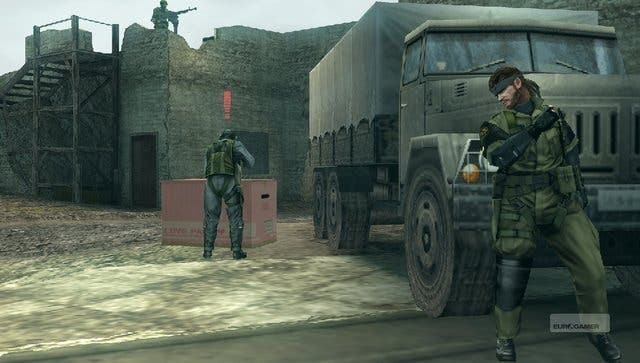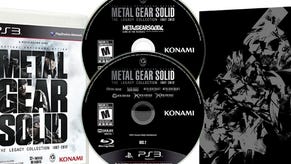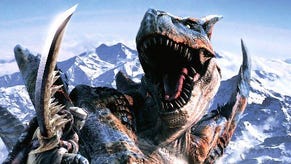Metal Gear Solid: Peace Walker
A big step forward for the PSP?
Metal Gear Solid as a series is the most perfect satire of the videogame that has ever been made, and I'm still not absolutely sure it's intentional. The consistency would suggest that its juxtaposition of super-serious military posturing and absolute unadulterated nonsense is the product of considered genius, but then it could just be the inspired direct-feed of a brilliantly deluded mind. MGS is one of the only series' left in the word that's largely the product of a single creator's vision rather than the filtrate of layers of ideas panels, concept meetings and corporate approval. Whatever you think of them as actual videogames, they're certainly "important".
Peace Walker, meanwhile, is gorgeous. It's far and away the best-looking PSP game in existence; like Monster Hunter Freedom Unite, it looks and feels more like something you'd expect from a home console, with a wealth of mission content, four-person multiplayer, lush, open environments and, above and beyond, a striking, superbly varied artistic style. Cut-scenes are a mixture of the usual 3D rendered action and animated comic-style storyboard sequences, delineated in watercolour streaks and onomatopoeic letter explosions. The game's opening scenes are stunning, depicting a typically sultry Big Boss in a rain-sodden Cambodia; as a flash of lightning strikes, his stern expression melts suddenly into the inky lines that have traditionally defined him in concept artwork.
The tutorial is neatly framed in a combat demonstration for Boss's recruits to his mercenary army. Shirtless, moody and rain-spattered, he runs his soldiers through a drill on a sodden beach that takes us through all of the basic movement and combat. By default, the game maps movement to the analogue stick and camera control to the face buttons, but there's an alternative setup for the millions of Japanese players and 18 Western ones who've developed the trademark Monster Hunter claw that lets you control the camera with the d-pad instead.

The game uses the R button for all shooting and hand-to-hand combat. It's context-sensitive, naturally, though you have to tap right on the d-pad to put your gun away if you have one equipped before engaging in close-quarters combat. Tapping R whilst running in a direction sends Big Boss into a dive roll. Holding R whilst holding a direction gets him to throw the nearest enemy in that direction. Pressing R without touching the analogue controls punches and kicks, and holding it grabs an enemy in a chokehold. In situations where you're outnumbered you can throw enemies into each other, or send them flying one after the other in a neat little combo system. Once you've successfully chucked one guard off a cliff, a simple tap of the R button does the same to the next nearest enemy if you're surrounded.

For a context-sensitive system, it only rarely gets confused. Later on, during the actual missions, I often find myself diving headlong into an enemy rather than grabbing and throwing. The controls aren't locked down, though - every aspect of the configuration can be changed on the fly in persistent menus if something doesn't feel right. When you have a gun equipped, you aim with L and shoot with R, and moving, guiding the camera, aiming and shooting all at once isn't half as difficult as it probably should be on the PSP once you get used to the camera sensitivity. Lining up headshots will never be as easy as it is on a console with two analogue sticks, but the game compensates with a gentle auto-aim. That, too, can be adjusted as and when you grow in proficiency.









